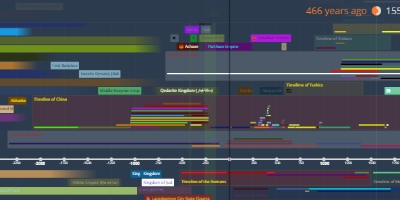Tarascan State (Iréchecua Tzintzuntzáni) (mar 1, 1300 – feb 1, 1530)
Description:
The Purépecha State, also known by the derogatory term Tarascan State, was a polity in pre-Columbian Mexico. Its territory roughly covered the geographic area of the present-day Mexican state of Michoacán, as well as parts of Jalisco and Guanajuato. At the time of the Spanish conquest, it was the second-largest state in Mesoamerica.The state was founded in the early 14th century and lost its independence to the Spanish in 1530. In 1543 it officially became the governorship of Michoacán, from the Nahuatl name for the Purépecha state, Michoacán ("place of those who have fish").
The Purépecha state was constituted of a network of tributary systems and gradually became increasingly centralized, under the control of the ruler of the state called the cazonci. The Purépecha capital was located at Tzintzuntzan on the banks of Lake Pátzcuaro, and, according to Purépecha oral tradition was founded by the first cazonci Tariácuri and dominated by his lineage, the "Uacúsecha" ("Eagles" in Purépecha language); however the largest city may have been Angamuco, extensive ruins of which were discovered in 2012 using LiDAR technology.
The Purépecha (Tarascan) were contemporary with and an enemy of the Aztec Empire, against which it fought many wars. The Purépecha empire blocked Aztec expansion to the northwest, and the Purépecha fortified and patrolled their frontiers with the Aztecs, possibly developing the first truly territorial state of Mesoamerica.
Due to its relative isolation within Mesoamerica, the Purépecha state had many cultural traits completely distinct from those of the Mesoamerican cultural group. It is particularly noteworthy for being among the few Mesoamerican civilizations to use metal for tools and ornamentation, and even weapons.
Added to timeline:
Date:
mar 1, 1300
feb 1, 1530
~ 230 years
